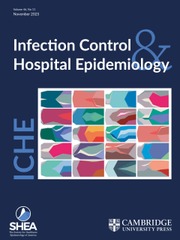On March 4, 1929, Herbert Hoover said in his inaugural address, “Public health service should be as fully organized and as universally incorporated into our governmental system as is public education. The returns are a thousandfold in economic benefits and infinitely more in reduction of suffering and promotion of human happiness.”
The U.S. public health system has made extraordinary strides in protecting lives, reducing disease, and improving the quality of life globally. From controlling infectious disease outbreaks to ensuring safe food, clean water, and equitable healthcare, our public health infrastructure has been a cornerstone of national well-being and served as a supporting resource to the global public health community.
Both APIC’s vision statement “A safer world through the prevention of infection” and SHEA’s vision statement “Safe Healthcare for All” support a strong, well-funded, and science-driven public health system—anchored by institutions like the Centers for Disease Control and Prevention (CDC), National Institutes of Health (NIH), Food and Drug Administration (FDA), state and local health departments, and the World Health Organization (WHO). Local to global coordinated efforts involving surveillance, research, public education, vaccination programs, and evidence-based policies and guidelines are at the core of SHEA’s and APIC’s purpose—infection prevention for patient safety.
Despite its contributions, the value of public health is often underrecognized in broader public discourse. At a time of escalating health misinformation and disinformation, it is more important than ever to strengthen and empower our public health institutions. During the COVID-19 pandemic, misinformation directly contributed to increased morbidity and mortality, especially among unvaccinated populations. When science is politicized or silenced, it creates a void that misinformation readily fills—undermining trust and paving the way for the dismantling of essential programs. One such example is the elimination of external advisory bodies like the CDC’s Healthcare Infection Control Practices Advisory Committee (HICPAC). While not without challenges, HICPAC has played a critical role in shaping infection prevention guidelines by bringing practical, frontline expertise into the development of consensus-driven, evidence-based recommendations. Removing this group risks weakening the integrity and implementation of infection prevention standards, ultimately threatening both patient safety and broader public health outcomes.
Policies that suppress scientific communication or alter health reporting empower bad actors and conspiracy theorists. The result is rising distrust, falling vaccination rates, and greater disease burden. The public health workforce is already stretched thin. The claw back of CDC COVID-19 funding from health departments has led to layoffs, halted contracts, and abandoned programs—many of which served as infection prevention support in underserved communities like long-term care facilities. Surveillance systems, contact tracing, health equity programs, and emergency/pandemic preparedness functions are being dismantled as funds vanish. This places the burden on the public and on healthcare and puts patients at risk. The proposed elimination of the Prevention and Public Health Fund removes a key source of ongoing investment in public health infrastructure, including the Epidemiology and Laboratory Capacity (ELC) programs that underpin the U.S. disease surveillance network. These fiscal attacks dismantle the very foundation of preparedness—leaving the nation more vulnerable to disease outbreaks and pandemics.
SHEA and APIC remain committed to our organizational visions and reaffirm our commitment to the public health infrastructure. As organizations we are working on countless efforts independently and collaboratively to address key elements of what we believe are core to our missions, including:
• Defending science-based decision-making: ensuring public health agencies retain autonomy and are guided by peer-reviewed published evidence, not politics.
• Investing in the workforce: continuing to build on workforce development programs to build up infection prevention and infectious disease physician capacity and capabilities and working to make infection prevention an attractive and fulfilling career.
• Maintaining global partnerships: continuing to participate in the WHO’s Global Infection Prevention and Control Network and upholding strong international collaborations.
• Promoting transparency: continuing to publish high-quality research in our society’s scientific journals.
• Supporting equity: continuing to expand equity and inclusive initiatives to ensure we serve all our communities and reflect the values of our members.
• Educating Congress: APIC and SHEA meet with congressional leaders and educate them about infection prevention and its essential role in the healthcare system and patient safety.
The partnership between APIC and SHEA is essential. Together, we help our members stay informed, engaged, and represented in critical conversations. Our dedicated volunteers and staff work collaboratively to elevate issues and advance our shared mission across every level of our organizations. With sustained advocacy, bipartisan commitment, and member engagement, we can more effectively preserve and strengthen infection prevention in the public health system and healthcare institutions. APIC and SHEA remain committed to a strong and enduring partnership, recognizing the vital roles each of us plays in advancing infection prevention and strengthening it for the future.


